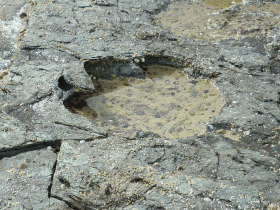Higher oxygen levels helped dinosaurs to thrive and spread, experts find
Rising levels of oxygen in the atmosphere hundreds of millions of years ago helped dinosaurs in North America to flourish, scientists have found.
Levels of the gas rose by nearly a third in three million years, which experts say is very rapid in geological terms.
Presenting their findings at the Goldschmidt Geochemistry conference in Barcelona, the researchers said this may have set the scene for sauropods and the Chindesaurus to expand into the tropics of North America and elsewhere.
The oxygen rise also coincided with a drop in carbon dioxide.
Scientists tested rocks from the Colorado Plateau and the Newark Basin that formed at the same time about 600 miles apart on Pangaea – what was a “supercontinent” comprising all the modern continents together.
They found that oxygen levels in the atmosphere jumped from around 15 per cent to around 19 per cent. Today’s atmosphere has about 21 per cent oxygen.
“We really don’t know what might have caused this increase, but we also see a drop in CO2 levels at that time," said lead researcher, Professor Morgan Schaller of the Rensselaer Polytechnic Institute in New York. "What is remarkable is that right at the oxygen peak we see the first dinosaurs appearing in the North American tropics, the Chindesaurus.
“The sauropods followed soon afterwards.”
He added: “What we can say is that this shows that the changing environment 215 million years ago was right for their evolutionary diversification, but of course oxygen levels may not have been the only factor.”
Read more
Dinosaur footprints from 170 million-years ago discovered in Scotland
Chindesaurus was an upright carnivorous dinosaur around 2m long and nearly a metre high. It was found extensively in North America, with origins in the North American Tropics.
Sauropods, which appeared soon after Chindesaurus, were the largest animals ever to live on land.
Professor Mike Benton, of the University of Bristol, said: “The first dinosaurs were quite small, but higher oxygen levels in the atmosphere are often associated with a trend to larger size. This new result is interesting as the timing of oxygen rise and dinosaur appearance is good, although dinosaurs had become abundant in South America rather earlier, about 232 million years ago.”
Additional reporting by Press Association
Read more
Read more Dinosaur footprints from 170 million-years ago discovered in Scotland

 Yahoo News
Yahoo News 

